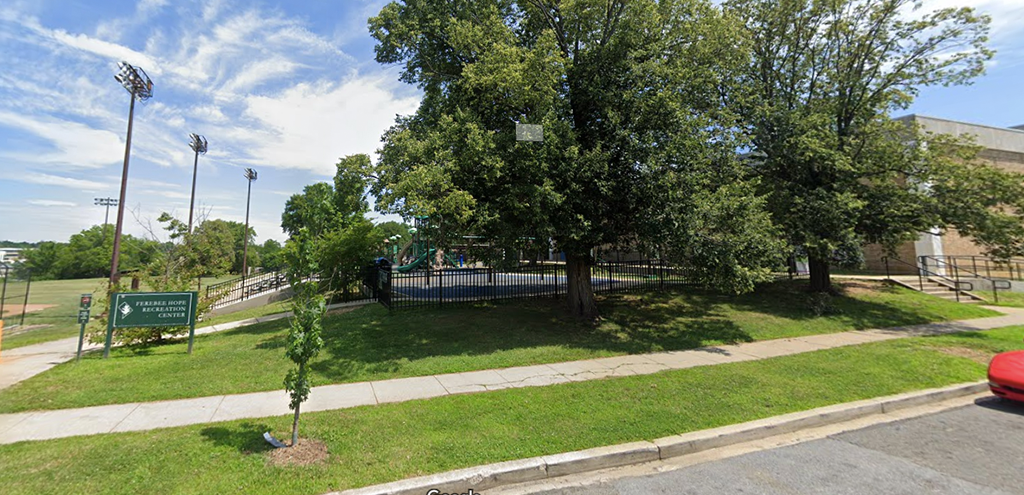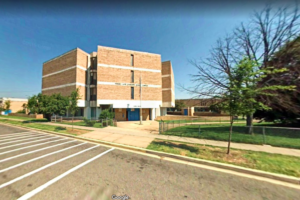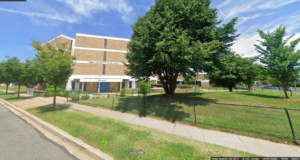THE LEAFLET

Black History Month: Ferebee-Hope Recreation Center
Black History Month, celebrated every February in the States, is a time to remember and honor the many groups and individuals who contributed to the success and achievements of this country as well as to advancement for African Americans as a people. Black History Month was born in DC by our very own Dr. Carter G. Woodson, who started Negro History Week in 1926. His house in Shaw, located at 1538 9th St NW in Shaw, is now a National Historic Site.
In the past, we’ve looked at the places in DC and people in forestry celebrating African American contributions to our country and field, but this year, we thought we’d do something different since this has been a wholly unusual year. Looking at the places our crew has planted sans volunteers in 2020, we spent the month delving into the prominent African Americans behind some of our planting locations, enriching our understanding of their place.
We’ve looked at Turner Elementary School, Tubman Elementary School and Marvin Gaye Park. Last but not least? Ferebee Hope Recreation Center and the attached Ferebee Hope Elementary School.
Ferebee Hope is not the eccentric name of one person, rather it’s two last names-Dorothy Celeste Boulding Ferebee and Marion Conover Hope. Dr. Dorothy Ferebee was a tireless advocate for racial equality and women’s health care and Marion Conover Hope was a community activist, youth advocate, lawyer, author, and internationally recognized social worker.
Frustrated by the lack of opportunities for Black women in their home states, both settled in DC. Marion Conover Hope and Dr. Ferebee worked together to set up a clinic in Capitol Hill and persuaded the trustees of the Friendship House, a charitable segregated medical center, to open an adjunct clinic for African-Americans. The Southeast Neighborhood House operated as a settlement house providing social services to the local community, including feeding the elderly, counseling youth, home improvement contests, a community newsletter, and summer schooling.
Ferebee, who died in 1980, succeeded founder Mary McLeod Bethune as president of the National Council of Negro Women and served as medical director of Alpha Kappa Alpha’s Mississippi Health Project, which provided healthcare and basic medical services to rural poor farmers in the Jim Crow South during the Great Depression. Hope, who died in 1974, was a founding member of the Anacostia Neighborhood Museum and was instrumental in designing the Anacostia Community School Project, the first decentralized school in the District.

The entrance of Ferebee-Hope Elementary School in 2008. Photo courtesy Google Maps.

The entrance of Ferebee-Hope Elementary School ten years later, in 2019. Photo courtesy Google Maps.
A joint recreation center and elementary school, Ferebee-Hope was constructed in 1974 and first opened its doors to students as Washington Highlands Elementary. In 1990, it was renamed Ferebee-Hope Elementary to honor their legacies. The elementary school closed in 2013, although the Recreation Center is still an active DPR site.
Our work at the recreation center started with our TreeWise summer camp program for District youth: in 2015 we were there for three sessions, working with kids between ages four and 13; in 2016 we returned for an additional three sessions; and in 2017 we capped off our summer camp with five sessions. The lessons engaged youth to earn their Junior Urban Forester official stamp by learning how trees are beneficial, how to best care for trees and what they need to survive, how they fit into ecosystems and habitats, and how to identify some common trees throughout the city.
Our advocacy team was the next department to work with Ferebee-Hope. When the elementary school closed, the city solicited input on the new vision of the school and its surrounding landscape. Our staff and Certified Tree Advocates attended community meetings to provide comments and engage with the community on planning the future of the site. Our focus was on maintaining and increasing canopy coverage at the site, since it is an active, busy recreation center and cherished greenspace near Oxon Run in the Washington Highlands neighborhood.
Unfortunately, our plans to host a large Community Tree Planting with friends, neighbors and community groups at the Rec Center were dashed due to the coronavirus pandemic. With updated safety protocols, our crew was able to return to Ferebee-Hope in late March 2020 and plant almost 35 trees including yellowwood, hackberry, coffeetree, hop hornbeam.
We don’t plant trees, protect Heritage trees, advocate for green spaces in new developments or engage youth for our stats. We don’t carry out our mission to restore, enhance and protect the tree canopy of the nation’s capital for the sake of data.
All of our work is for future generations of Washingtonians to enjoy and benefit from. This is why engaging everyone and anyone is critical – we can’t do this work alone and it takes a village to ensure a green, resilient, equitable future for all 8 Wards and all 713,244 and growing residents. Your hard work, dedication, and support makes our work possible. We cannot re-tree without you! Donate to support our work, and your communities, today.